 ‘4 things to see this week’ is sponsored by Bloomberg Connects, the free arts and culture app. Bloomberg Connects lets you access museums, galleries and cultural spaces around the world on demand. Download the app here to access digital guides and explore a variety of content.
‘4 things to see this week’ is sponsored by Bloomberg Connects, the free arts and culture app. Bloomberg Connects lets you access museums, galleries and cultural spaces around the world on demand. Download the app here to access digital guides and explore a variety of content.
Each week we bring you 4 of the most interesting objects from the world’s museums, galleries and art institutions hand-picked to mark significant moments in the calendar.
Egyptomania swept over France in the 19th century, and from there to the rest of Europe, as Napoleon marched into Egypt followed not only by soldiers, but also scientists and scholars. Obelisks started sprouting up in European capitals and sphinxes appeared on the riverbanks. A resurgence of interest in all things Egyptian broke out at the start of the 20th century as archaeologists such as Howard Carter excavated the pyramids and other treasures around the Nile, leading to motifs from ancient Egypt finding their way into Art Deco architecture. Even Hollywood got in on the act with films such as The Mummy (1932).
This week marks 100 years since Howard Carter opened the door to the tomb of Tutankhamun, where he discovered not only a sarcophagus that contained three coffins, but also the mummified body of King Tut – the first undisturbed royal mummy to be discovered and perhaps the most prized discovery of his excavation. This is the perfect excuse to revisit some Egyptian artefacts from the world’s greatest collections – so far, there are no reports of people being cursed on account of viewing them.
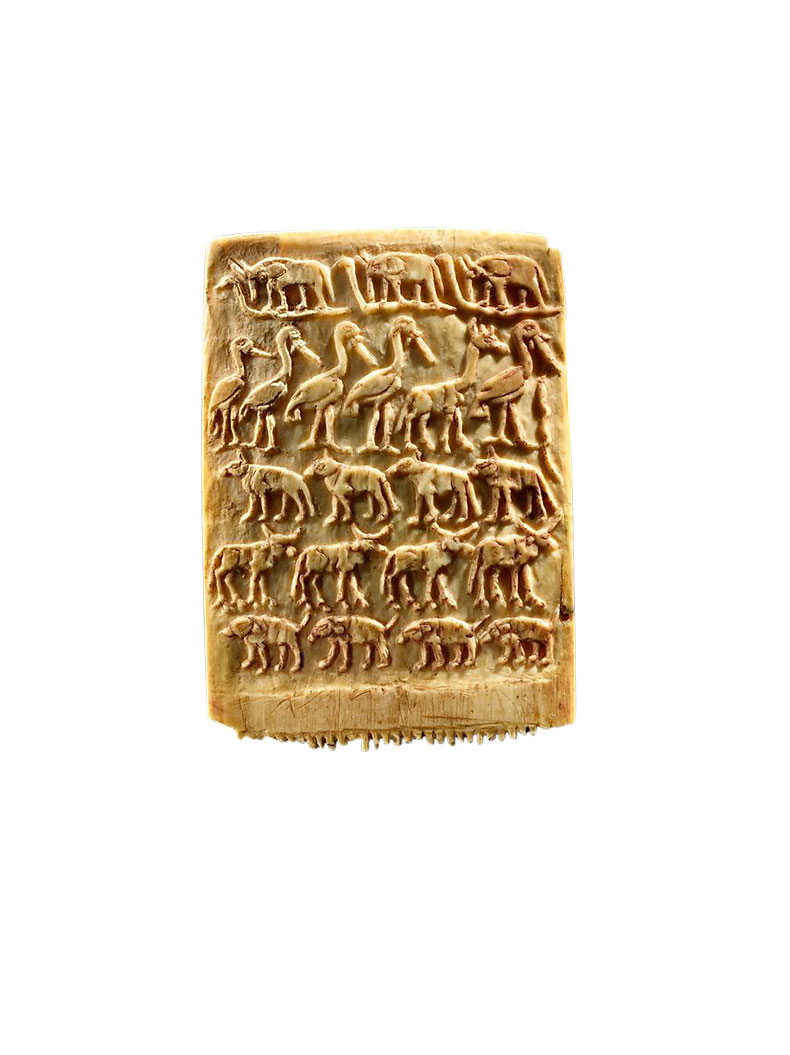
Hair comb decorated with rows of wild animals (c. 3200–3100 BC), Egypt, Predynastic, Late Naqada III. Metropolitan Museum of Art, New York
1. Hair comb decorated with rows of wild animals
Metropolitan Museum of Art, New York
The detailed decoration on this 5,000-year-old comb suggests it was used for more than fixing hair – it was likely owned by a member of the elite and put to ceremonial use. Click here to find out more on the Bloomberg Connects app.
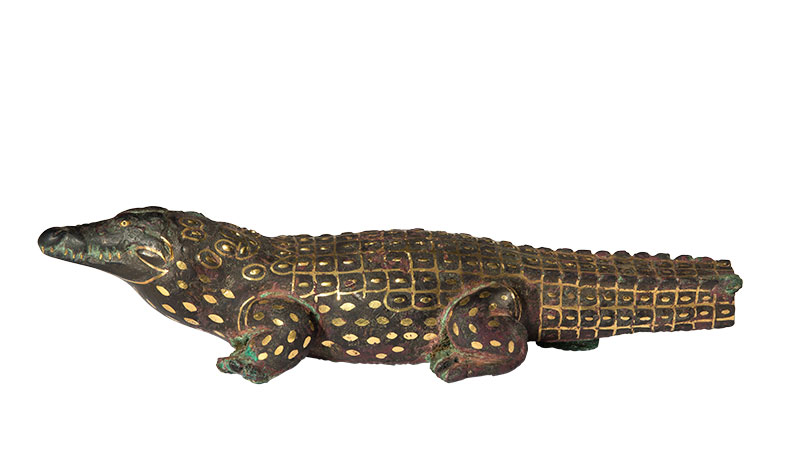
Cult statue of a crocodile. Photo Marianne Franke; courtesy Smaek
2. Cult statue of a crocodile
Staatliches Museum Ägyptischer Kunst, Munich
Embellished with glittering golden scales, this small crocodile would have originally been kept in a shrine in the sanctum of a temple. The ancient Egyptians believed that after daily rituals had been performed, the gods temporarily manifested in the form of these statues – only a few of the statues have survived. To find out more click here.
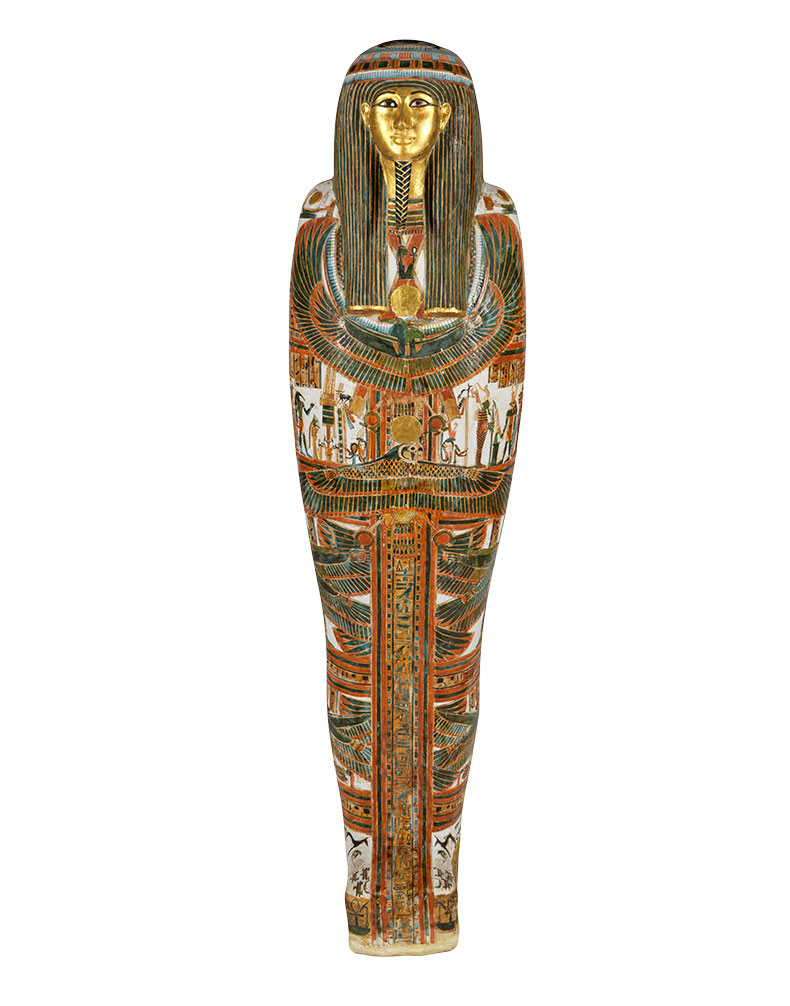
Cartonnage mummy case of Nakhtefmut. Photo: ©️ The Fitzwilliam Museum, Cambridge
3. Cartonnage mummy case of Nakhtefmut
Fitzwilliam Museum, Cambridge
This elaborately painted coffin is made from cartonnage – linen stiffened with plaster – and once held the mummified remains of Nakhtefmut, an employee in Ipetsut, the temple of Amun-Re, the chief god at Thebes. The golden face represents an idealised vision of youth while the narrow plaited beard is associated with Osiris, the god of the underworld. To find out more click here.

Pectoral of Ramses II.Musée du Louvre, Paris
4. Pectoral of Ramses II
Musée du Louvre, Paris
Pectorals were a form of jewellery worn by pharaohs and the very rich, designed to lie across the wearer’s chest. This example from the 13th century BC is made of cloissoné glass and gold and bears the name of Ramses II. To find out more click here.
Download now
![]() ‘4 things to see this week’ is sponsored by Bloomberg Connects, the free arts and culture app. Bloomberg Connects lets you access museums, galleries and cultural spaces around the world on demand. Download the app here to access digital guides and explore a variety of content or scan the QR code.
‘4 things to see this week’ is sponsored by Bloomberg Connects, the free arts and culture app. Bloomberg Connects lets you access museums, galleries and cultural spaces around the world on demand. Download the app here to access digital guides and explore a variety of content or scan the QR code.

Unlimited access from just $16 every 3 months
Subscribe to get unlimited and exclusive access to the top art stories, interviews and exhibition reviews.


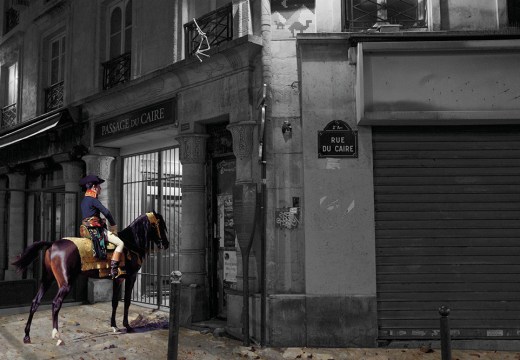

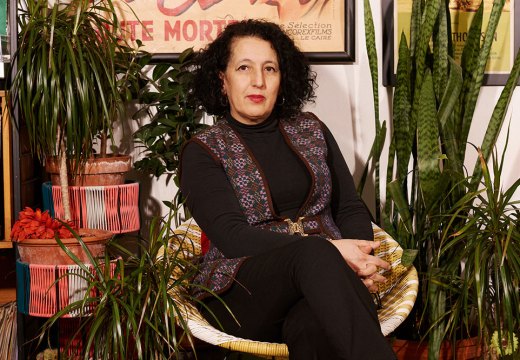









![Masterpiece [Re]discovery 2022. Photo: Ben Fisher Photography, courtesy of Masterpiece London](http://www.apollo-magazine.com/wp-content/uploads/2022/07/MPL2022_4263.jpg)
Why are fathers so absent from art history?